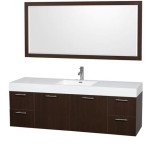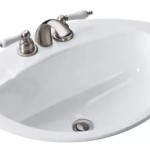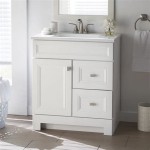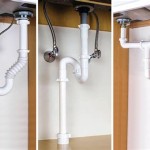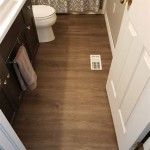How To Stop Mould In Bathroom Cabinets
Mould growth in bathroom cabinets is a common problem, particularly in environments with high humidity and poor ventilation. Mould not only damages the structural integrity of the cabinets and surrounding areas but also poses a significant health risk to occupants. Understanding the causes of mould and implementing preventative measures is crucial for maintaining a healthy and safe bathroom.
This article provides a comprehensive guide to preventing mould growth in bathroom cabinets, covering key areas such as understanding the conditions that promote mould, implementing preventative maintenance strategies, and utilizing appropriate cleaning and disinfection techniques. Effective management of these factors can significantly reduce the likelihood of mould infestation and preserve the longevity of bathroom fixtures.
Understanding the Conditions That Promote Mould Growth
Mould thrives in environments characterized by moisture, warmth, and a food source. Bathrooms, by their very nature, are frequently damp due to showers, baths, and sinks. The enclosed nature of bathroom cabinets further exacerbates this issue by inhibiting air circulation and trapping moisture, creating an ideal breeding ground for mould spores.
Humidity is a critical factor. High humidity levels, typically above 60%, provide the necessary moisture for mould spores to germinate and proliferate. This is especially prevalent in bathrooms without adequate ventilation. When warm, moist air comes into contact with cooler surfaces, such as the inside of a bathroom cabinet, condensation occurs, further contributing to the moisture buildup.
Organic materials commonly found in bathroom cabinets, such as wood, drywall, and even dust, serve as a food source for mould. Mould digests these materials, leading to structural damage and the release of volatile organic compounds (VOCs) that can contribute to unpleasant odors and health problems. Even seemingly inorganic materials can harbor enough organic dust and residue to sustain mould growth.
Poor ventilation is a major contributor to mould problems. Without adequate airflow, moisture cannot evaporate quickly, leading to prolonged dampness. This is particularly problematic in bathrooms with small or non-existent windows, or where exhaust fans are absent or underpowered. Even if an exhaust fan is present, its effectiveness can be diminished if it is not used consistently or if it is not properly maintained.
Water leaks, whether from plumbing fixtures or structural issues, can introduce significant amounts of moisture into bathroom cabinets. Even small, slow leaks can lead to significant mould growth over time, often before they are even detected. Regularly inspecting plumbing under sinks and behind toilets is critical in identifying and addressing potential leaks before they escalate into mould problems.
Finally, the type of materials used in the construction of bathroom cabinets can influence their susceptibility to mould. Some materials are more porous than others, allowing moisture to penetrate more easily and providing a more favorable environment for mould growth. Particleboard and MDF, for example, are particularly prone to water damage and mould, while solid wood and moisture-resistant materials offer better protection.
Implementing Preventative Maintenance Strategies
Preventative maintenance is the most effective approach to stopping mould growth in bathroom cabinets. It involves taking proactive steps to control moisture levels, eliminate food sources, and ensure adequate ventilation. Regular inspection and cleaning are essential components of a successful preventative maintenance program.
Ensuring proper ventilation is paramount. The installation of a properly sized and functioning exhaust fan is critical for removing moisture from the bathroom after showers and baths. The fan should be powerful enough to exchange the air in the bathroom several times per hour. It is also important to ensure that the exhaust fan vents directly to the outside, rather than into an attic or other enclosed space, as this can simply relocate the moisture and create mould problems elsewhere.
Using the exhaust fan consistently is just as important as having one. It should be activated before starting a shower or bath and left running for at least 20 minutes afterward to allow sufficient time for the moisture to dissipate. Automatic timers or humidity sensors can be installed to ensure that the fan operates effectively without requiring manual intervention.
Controlling humidity levels in the bathroom is also crucial. In addition to using the exhaust fan, consider using a dehumidifier, especially during periods of high humidity. Dehumidifiers can help to lower the moisture content of the air, making it less conducive to mould growth. Monitor humidity levels using a hygrometer and aim to keep them below 60%.
Addressing water leaks promptly is essential. Regularly inspect plumbing fixtures and pipes under sinks and behind toilets for any signs of leaks or water damage. Repair any leaks immediately to prevent moisture from accumulating in the cabinets. Consider using water leak detectors that can provide early warnings of potential leaks, allowing for quick intervention and minimizing water damage.
Maintaining clean and dry cabinet interiors is also important. Regularly clean the inside of bathroom cabinets to remove dust, dirt, and spills that can serve as a food source for mould. Use a mild detergent and water to clean surfaces and dry them thoroughly afterward. Avoid using harsh chemicals or abrasive cleaners that can damage the cabinet finish and potentially create a more porous surface that is more susceptible to moisture absorption.
Consider using moisture-absorbing products in bathroom cabinets. Desiccants, such as silica gel packets or moisture-absorbing crystals, can help to absorb excess moisture and keep the cabinet interiors dry. Replace these products regularly as they become saturated. Baking soda can also be used as a natural deodorizer and moisture absorber.
Storing items properly in bathroom cabinets can also help to prevent mould growth. Avoid storing damp or wet items in the cabinets, as this can introduce moisture and create a favorable environment for mould. Allow wet towels and washcloths to dry completely before storing them. Consider using breathable storage containers to allow for air circulation within the cabinets.
Improving air circulation within the cabinets is beneficial. Leave cabinet doors slightly ajar to allow for better airflow. Consider installing ventilation holes or small fans inside the cabinets to further enhance air circulation. This can help to prevent moisture from becoming trapped and promote faster drying.
Applying a moisture-resistant sealant to the interior surfaces of bathroom cabinets can provide an additional layer of protection against mould. This sealant can help to prevent moisture from penetrating the cabinet material and creating a favorable environment for mould growth. Consider using a sealant specifically designed for use in bathrooms, which will typically be formulated to resist moisture and mildew.
Utilizing Appropriate Cleaning and Disinfection Techniques
Even with the best preventative measures, mould can still occasionally appear in bathroom cabinets. When mould is detected, it is important to address it promptly and effectively to prevent it from spreading. Proper cleaning and disinfection techniques are essential for removing existing mould and preventing its recurrence.
The first step in cleaning mould is to identify the type of mould and assess the extent of the infestation. Small areas of mould growth can often be cleaned using household products, while larger infestations may require professional remediation. If you are unsure about the type of mould or the extent of the infestation, it is best to consult with a qualified mould remediation specialist.
Before beginning the cleaning process, it is important to protect yourself from exposure to mould spores. Wear appropriate personal protective equipment (PPE), including gloves, a mask (preferably an N95 respirator), and eye protection. This will help to prevent you from inhaling mould spores or coming into contact with them.
When cleaning mould, avoid using harsh chemicals or abrasive cleaners, as these can damage the cabinet finish and potentially create a more porous surface that is more susceptible to moisture absorption and future mould growth. Instead, use a mild detergent and water to clean the affected areas. A solution of equal parts water and white vinegar is also an effective mould cleaner.
Apply the cleaning solution to the mouldy areas and scrub gently with a soft brush or sponge. Avoid scrubbing too hard, as this can spread the mould spores and damage the surface of the cabinet. Allow the cleaning solution to sit on the affected areas for a few minutes to allow it to penetrate the mould.
Rinse the cleaned areas thoroughly with clean water and dry them completely with a clean cloth. Ensure that there is no residual moisture remaining, as this can encourage mould to regrow. Consider using a dehumidifier or fan to help speed up the drying process.
After cleaning, disinfect the affected areas to kill any remaining mould spores. Several effective disinfectants can be used, including bleach, hydrogen peroxide, and tea tree oil. Bleach is a strong disinfectant but can damage some materials, so it should be used with caution. Hydrogen peroxide is a gentler disinfectant that is less likely to cause damage. Tea tree oil is a natural antifungal agent that can be diluted with water and sprayed onto the affected areas.
When using bleach, dilute it with water according to the manufacturer's instructions. Apply the bleach solution to the affected areas and allow it to sit for at least 10 minutes before rinsing with clean water and drying thoroughly. Ensure adequate ventilation when using bleach, as it can release harmful fumes.
Hydrogen peroxide can be applied directly to the affected areas without dilution. Allow it to sit for at least 10 minutes before wiping away with a clean cloth. Hydrogen peroxide is a relatively safe and effective disinfectant that is less likely to damage cabinet surfaces.
Tea tree oil should be diluted with water before use. Mix a few drops of tea tree oil with water in a spray bottle and spray the solution onto the affected areas. Allow it to sit for at least 10 minutes before wiping away with a clean cloth. Tea tree oil has a strong odor, so ensure adequate ventilation when using it.
After disinfecting, monitor the cleaned areas for any signs of mould regrowth. If mould reappears, repeat the cleaning and disinfection process. If the mould continues to reappear, it may be necessary to take more aggressive measures, such as replacing the affected cabinets or hiring a professional mould remediation specialist.
In addition to cleaning and disinfecting the affected areas, it is also important to address the underlying cause of the mould growth. If the mould is caused by a water leak, repair the leak immediately. If the mould is caused by poor ventilation, improve the ventilation by installing an exhaust fan or opening windows. Addressing the root cause of the problem is essential for preventing mould from recurring in the future.
:max_bytes(150000):strip_icc()/tricks-keep-bathroom-mold-free-326859-Hero-01-2595e82c82c345079eba7f1927649dd5.jpg?strip=all)
10 Tricks To Prevent Mold In Your Bathroom

Ways To Prevent Mold In Bathrooms Forbes Home

How To Stop Mould In The Bathroom Victoriaplum Com

How Long Should A Central C Unit Last Crawford Mech

9 Simple Tips To Help Eliminate Mold In The Bathroom Ccs Property Services Llc

How To Remove Mold From Wood Bathroom Cabinets Cleaning More

How To Prevent Mold From Growing In Your Closet

Preventing Mould In The Bathroom 9 Important Tips

How To Prevent Mold In Shower

Causes Of Mold In The Kitchen And How To Avoid It Home Matters Ahs
Related Posts
